How to feed gooseberries in spring
To get a rich harvest of gooseberries every year, it is important to regularly feed the shrubs with fertilizers. Organic - for the growth of fruits, mineral - for the growth of green mass and protection from diseases and pests. Over the summer, gooseberries are fed 2-3 times, alternating root and foliar fertilizers. It is important to respect the proportions and timing of nutrient introduction. What types of fertilizers for gooseberries exist and what to look for when applying dressings, we will tell in the article.
The content of the article
Fertilizers suitable for gooseberries
Fertilizers are divided into mineral and organic. There is also a separate classification - folk remedies. For a rich harvest, it is recommended to alternate them with each other.
Organic
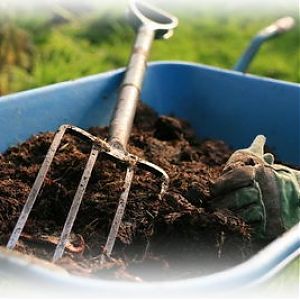
Organic fertilizers are attractive because they do not require financial costs. They improve the taste and marketability of fruits, strengthen the plant's immunity, and stimulate the development of the root system.
The most common type of organic fertilizer is cow dung. It makes the soil breathable and creates the most favorable conditions for growing gooseberries. The amount of fertilizers per 1 sq. m no more than 6 kg of manure. It is brought in once every 2 years, otherwise the berries will be saturated with nitrates.
In addition to manure, summer residents use:
- Compost. Rich in trace elements, especially useful for young plants. May contain dangerous microorganisms and larvae insect pests.
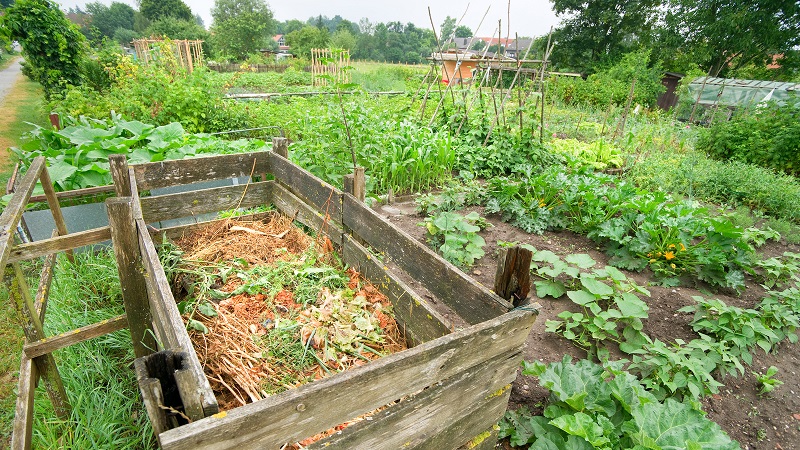
- Sawdust. Experienced gardeners recommend using old sawdust ("fresh" ones extract nitrogen and moisture from the soil). They are also used as a mulch ingredient.
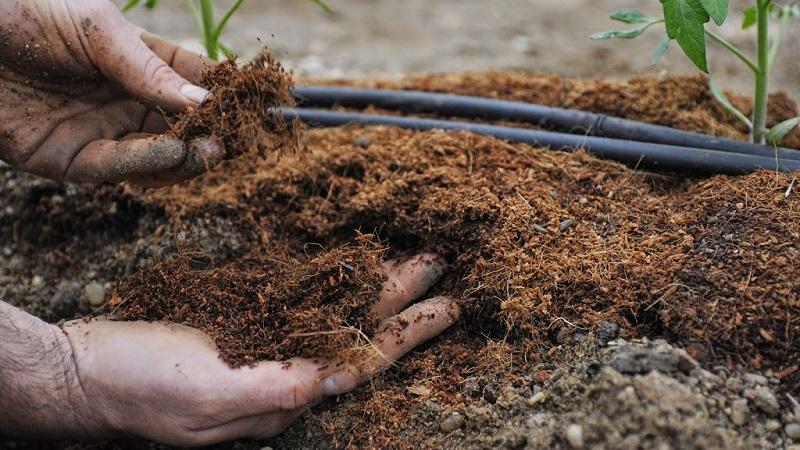
- Bird droppings. Rich in nitrogen, phosphorus, calcium, iron. Litter fertilizes the soil and at the same time disinfects it, reduces the risk of developing fungal and viral diseases.
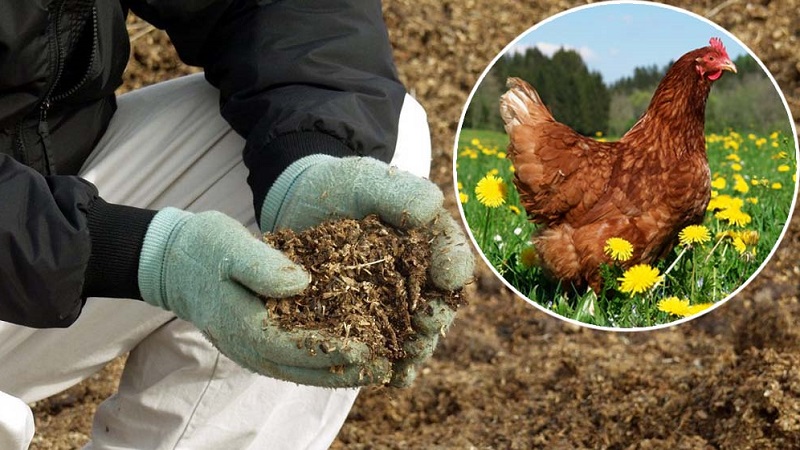
Another suitable fertilizer for gooseberries is ash. The main thing is to observe the dosage (for 1 bush, a solution of 2 liters of water and 75 g of dry ash is required). It is also not recommended to add ash to acidic soils. Fertilizer is rich in calcium and phosphorus, but does not contain nitrogen. Therefore, along with ash dressings, it is recommended to add nitrogen-containing ones.
Mineral
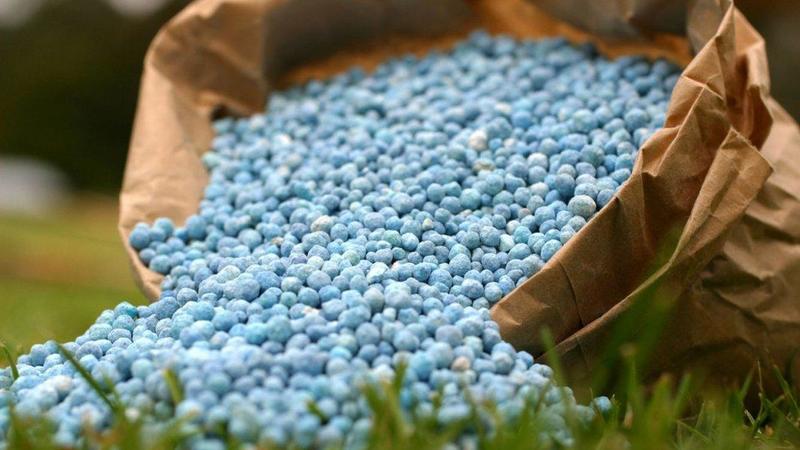
Mineral complexes contain micro- (iodine, boron, manganese, zinc) and macroelements (nitrogen, phosphorus, sulfur, iron). Fertilizers are divided into root - those that are applied under the root of the shrub, and leaf - spraying and watering shoots and leaves.
- From root dressings use a mixture of urea, simple superphosphate and potassium sulfate in a ratio of 15:25:15 g per 1 sq. m. It is brought in in early spring before bud break. During the ripening of fruits, summer residents use 40 g of potassium sulfate and 60 g of simple superphosphate. The mixture stimulates the ovary and fruit ripening. Also use nitrophosphate or ammonium nitrate. Fertilizers are applied at a distance of 50 cm from the bush so that the root system does not get burned.
- Foliar (leaf) fertilizers used for preventive purposes. They protect against diseases and pests, accelerate the development of shoots and leaves, bud set. In the middle of the ripening period, summer residents prepare a mixture - 20 g of ammonium sulfate is required for 10 liters of water. The bushes are sprayed from a spray bottle at a distance of 40 cm. The right time for the procedure is morning or evening, calm and dry weather. Foliar dressing is stopped 3 weeks before harvest.
Folk feeding methods
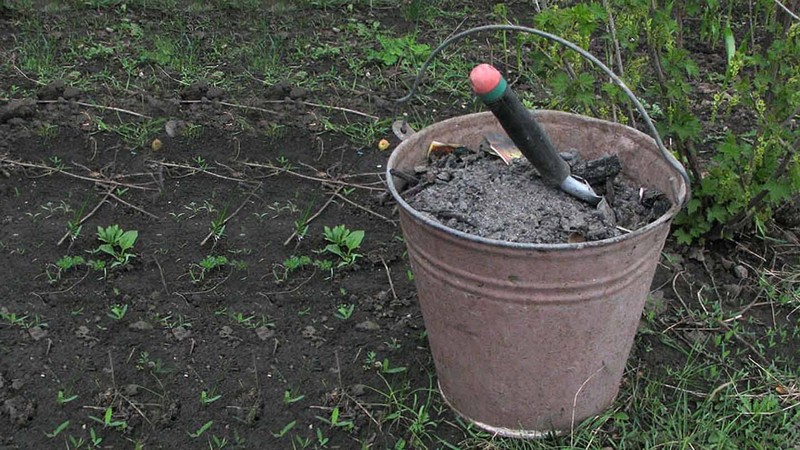
Along with mineral and organic fertilizing, gardeners use folk remedies - affordable and environmentally friendly. In early spring, gooseberries are fertilized with potato infusion: 1 liter of potato peel is poured into 1 liter of boiling water and 1 tbsp. wood ash. The hot mixture is stirred and poured into the trunk circle. Potato root dressing not only strengthens the roots of the shrub, but also awakens the buds after winter. Fertilizer is used 1 time per season.
For foliar feeding, an infusion of herbs is prepared - chamomile, tansy, calendula, nettle. A bucket of water requires 5 kg of grass, 1 tbsp. ash and 1 tbsp. onion peel. The mixture is poured with water and left in the house for a week. After the gooseberry is sprayed with the resulting solution. Herbal infusion increases fruiting and protects against diseases.
Spring feeding gooseberries for a good harvest
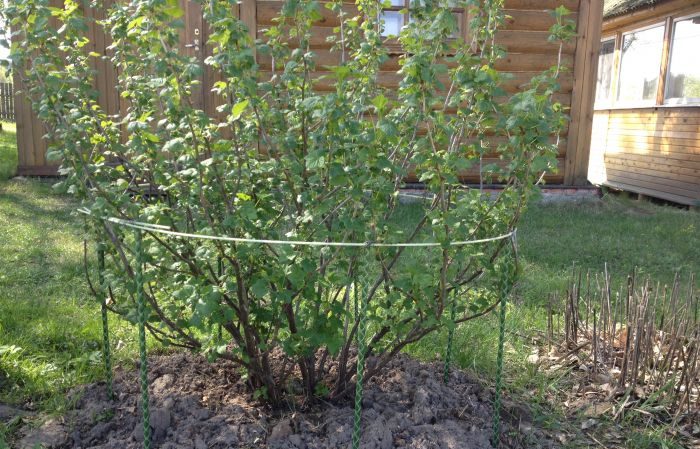
Experienced summer residents know how to feed gooseberries in spring for a good harvest. They carry out several dressings - at the end of March and in the middle of May. The first consists of organic matter and mineral fertilizers: manure, poultry droppings, potassium sulfate, superphosphate, ammonium sulfate. Fertilizers stimulate the development of shoots, start the gooseberry vegetation process. After application, it is recommended to mulch the soil, sprinkle the base of the bush with loose earth.
The second dressing is carried out in May, it has a beneficial effect on flowering and fruit set. It is recommended to prepare a nutrient mixture containing organics and minerals. Gardeners use the Kemira mineral complex and rotted manure (or compost). The mixture is applied under the roots, poured abundantly with warm water and mulched. To accelerate the development of buds, the plant is sprayed with a solution of ammonium sulfate.
Attention! If the soil is acidic, then it is recommended to lime it before applying top dressing. For 1 sq. m requires 200 g of dolomite flour or 500 g of lime.
How to feed in summer during fruiting

In summer, gooseberries are fertilized around the end of June - early July or mid-August. In June, they apply phosphorus and potash fertilizers or complex fertilizing - "Ammophos" or "Nitrofosku". They improve the taste and marketability of the fruits, increase the yield, the berries grow larger. An organic solution also has a beneficial effect on the development of fruits - 1 kg of manure, 200 g of compost are required for 10 liters of water. The solution is covered with a lid and left to ferment for 10 days. The mixture is poured into the trunk circle, mulched with peat chips on top.
If the gooseberry is late ripening, then foliar feeding is carried out in August. The bushes are sprayed with a 0.05% boric acid solution or urea. Foliar dressing in summer compensates for the lack of minerals, the shrub receives vitamins through the leaves.
It is interesting:
How to transplant gooseberries correctly
One of the sweetest gooseberry varieties - Candy
Medium-late winter hardy "Finnish" gooseberry with sweet and sour berries
How to fertilize in the fall
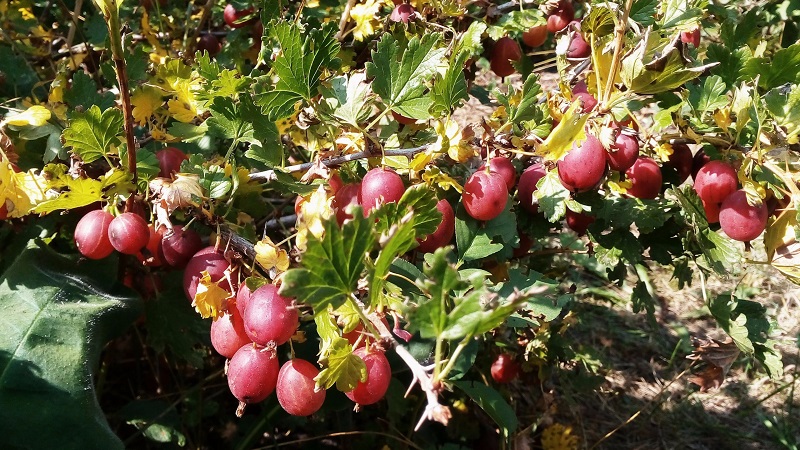
In autumn, they pay attention to phosphorus and potassium fertilizers. Summer residents add 50 g of simple superphosphate under each bush after harvesting or 70 g of phosphate rock. Fertilizers strengthen the gooseberry immune system and help prepare for winter. Use 5 g of potassium chloride per 1 sq. m or 100 g of potassium salt per bush. Potassium is involved in the metabolism of the plant, promotes the accumulation of sugar in fruits, they become more tasty.
Also, in the fall, spraying is carried out - they use Bordeaux liquid, solutions of Topaz or Fundazol. They protect gooseberries from powdery mildew and rust, gray mold and anthracnose. The main thing is to remember that fungicides should not be used 3 weeks before harvest.
Attention! Of the folk fertilizers, a yeast solution is used. 1 kg of yeast is dissolved in 5 liters of warm water and insisted for 3 hours. The resulting mixture is diluted with water in a ratio of 1:10. Such feeding will not only improve the health of the bush, but also will not harm the environment and health.
Conclusion
Organic and mineral fertilizers, as well as folk remedies - what can be used to feed gooseberries during ripening. Organic matter stimulates the development of leaves and shoots, mineral mixtures improve the taste of fruits, they become larger and heavier. In the spring and summer months, the plant is protected from pests and diseases, in the fall, it is prepared for hibernation. Gardeners use root and leaf methods. The feeding schemes are simple, the main thing is to remember the main ingredients and their proportions.